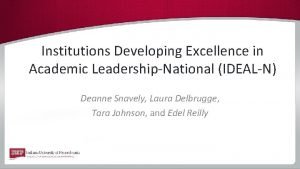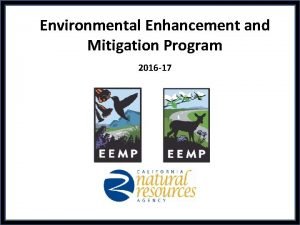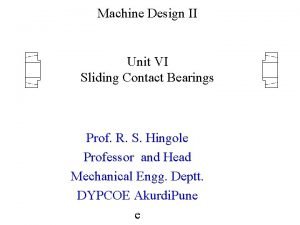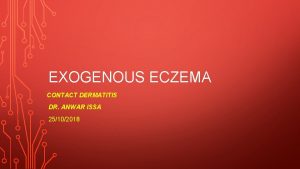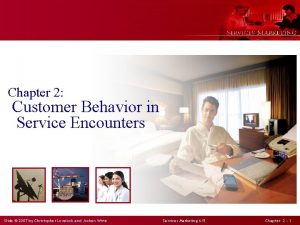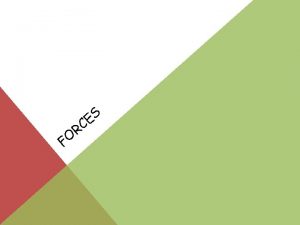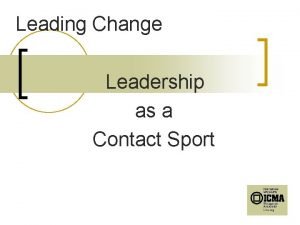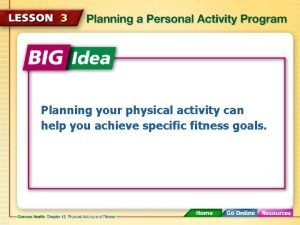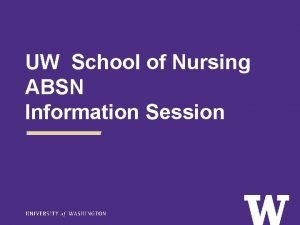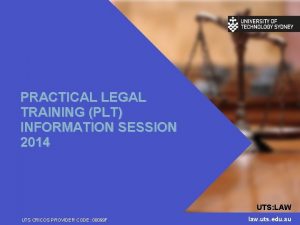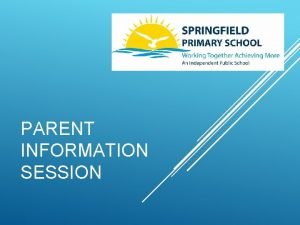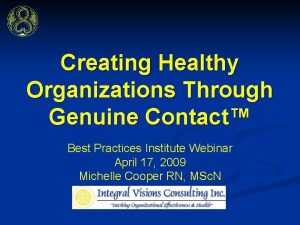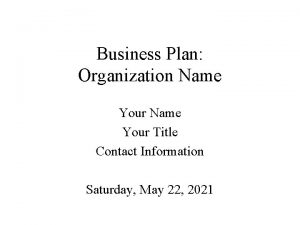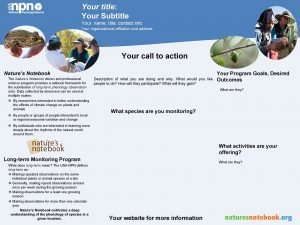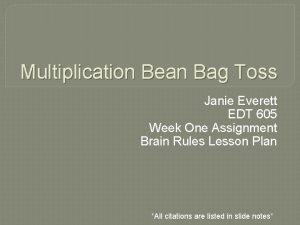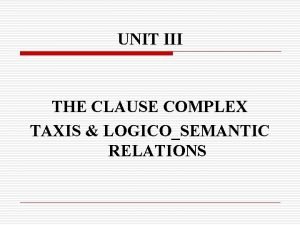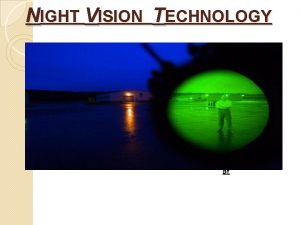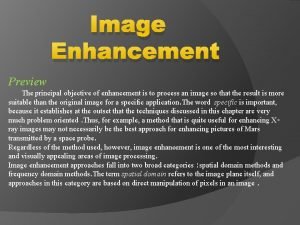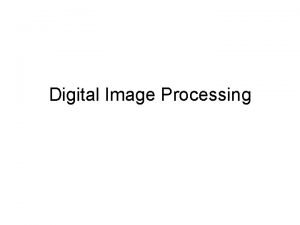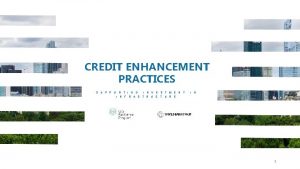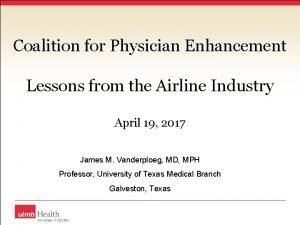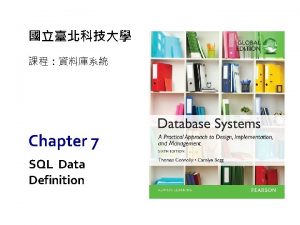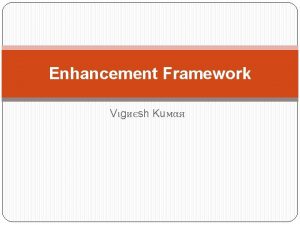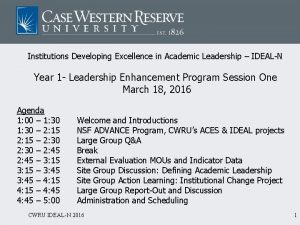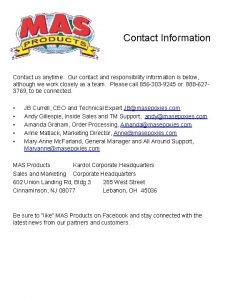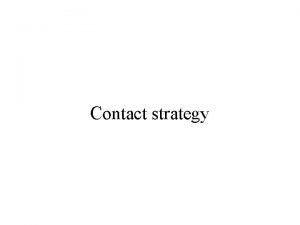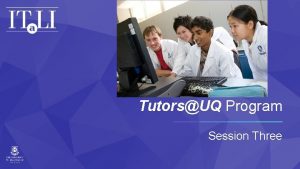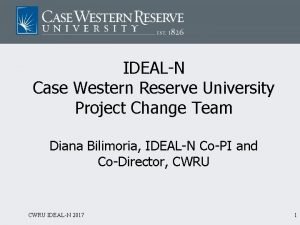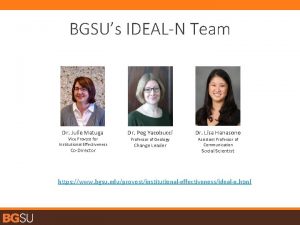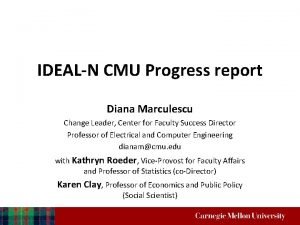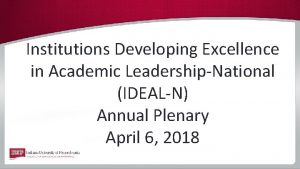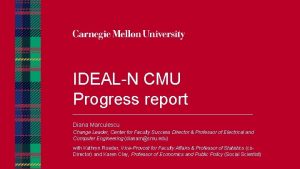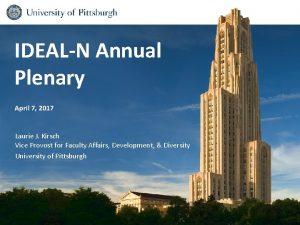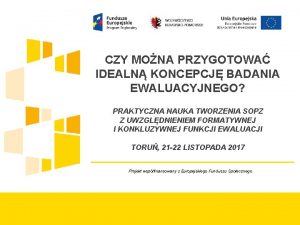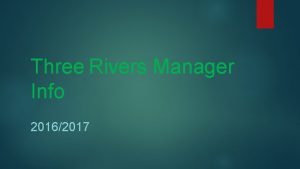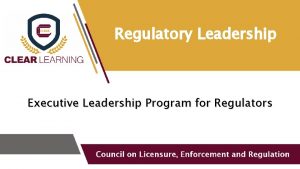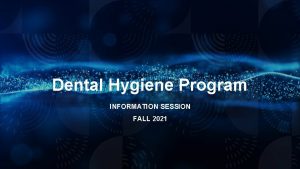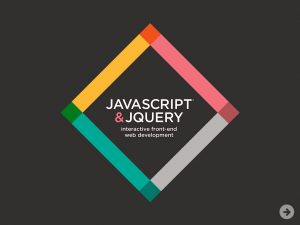IDEALN Leadership Enhancement Program Session Three Contact Information






































- Slides: 38

IDEAL-N Leadership Enhancement Program Session Three Contact Information for additional questions: http: //www. case. edu/ideal-n Heather Burton 216 -368 -0086 Heather. burton@case. edu September 23, 2016 CWRU IDEAL-N 2016 1

Agenda 1: 00 -1: 45 -2: 15 -2: 30 -2: 45 -3: 30 -3: 45 -4: 15 -4: 45 -5: 00 Welcome and 3 -Minute Check-In Gender Equity Index Discussion and Next Steps Increasing the Impact of Your Institutional Transformation BREAK Cross-University Discussion: Increasing the Impact of Your Institutional Transformation Embedding Your Vision into the Fabric of the University Action Learning (University Change Team Discussion) Large Group Discussion Logistics, Scheduling & Wrap Up CWRU IDEAL-N 2016 2

Check-In – 3 minutes each § Brief overview of activities and meetings conducted since last session § Social science research projects/presentations/ publications planned § Publicity on your campus—press releases, websites developed § Anything else noteworthy about your IDEAL-N efforts CWRU IDEAL-N 2016 3

NSF IDEAL-N Gender Equity Index (GEI) Item Development 4

Gender Equity Dimensions 1. 2. 3. 4. 5. Faculty Climate Work-Family Policies and Practices Resource Equity Women and URM Faculty Participation Tenure and Promotion 5 CWRU IDEAL-N 2016

Factor 1 – Faculty Climate 1. Does your campus conduct a faculty climate survey that is administered in regular intervals (for example, once every three years? ) 2. Are faculty climate survey findings distributed to senior administration and/or faculty? 3. Does your faculty climate survey contain questions specific to women faculty? 4. Does your faculty climate survey contain questions specific to URM faculty? 5. Does your faculty climate survey ask about satisfaction with teaching load and time for scholarly work? 6. Does your faculty climate survey include questions regarding the perception of climate and/or opportunities for women and URM faculty? 7. Does your campus provide regular, ongoing diversity and inclusion training for faculty and administrators? 8. Does your campus offer formal mentoring programs or other career development supports for women faculty? 9. Does your campus offer formal mentoring programs or other career development supports for URM faculty? 6 CWRU IDEAL-N 2016

Factor 1 – Faculty Climate 10. Do you have a specific office on campus addressing faculty development needs and resources? 11. Does your camps have an advisory board or standing advisory committee to examine women’s issues that reports in an ongoing, active manner with senior leadership of the institution? 12. Does your camps have an advisory board or standing advisory committee to examine race/ethnicity issues that reports in an ongoing, active manner with senior leadership of the institution? 13. Is there a formal process through which faculty can report discrimination? 14. Is there a formal process through which faculty can address a grievance? 15. Does your campus offer a leadership development program for faculty who wish to be promoted to department chairs or deans? 16. Does your campus require mandatory diversity training for search committees and/or promotion and tenure committees? 17. Does your campus record the number of women and URM faculty who are invited to the campus as distinguished visiting lecturers or scholars? 7 CWRU IDEAL-N 2016

Factor 2 – Work-Family Policies and Practices 1. Does this institution have formal policies for full/partial relief of teaching duties when faculty are caring for a newborn or a newly adopted child? 2. Does this campus have formal policies and practices that provide relief of teaching for care-giving opportunities (e. g. for spouses, parents, and relatives)? 3. If both parents are faculty at your University, are both permitted to take leave to care for a new child? 4. Do domestic partners have the same coverage under your University policies as married partners? 5. At your campus, do policies for work-family balance have a “home” (such as a permanent office) where someone is responsible for collecting and reporting on policy usage? 6. Are work-family policies regularly publicized to ensure that all relevant constituencies the policies and where to obtain information regarding policy changes? . . are aware of 7. Is information regarding work-family policy incorporated into training sessions (such as. . for deans, chairs, new faculty, mentoring programs)? 8 CWRU IDEAL-N 2016

Factor 2 – Work-Family Policies and Practices 8. Has your institution developed a recruitment and hiring policy which is responsive to dual career couples? 9. At your campus, is faculty parental leave paid? 10. Does your campus have a formal policy for stopping the tenure clock due to the. . . birth/adoption of a child? 11. Is policy usage at your institution tracked by gender, race/ethnicity, and school/college? 12. Does your campus have a faculty child care center or provide access to child care? 13. Are funds available for covering the costs of child care when faculty must travel for scholarly reasons? 9 CWRU IDEAL-N 2016

Factor 3 – Resource Equity 1. Does you campus annually analyze differences in salary and supplements between women and men faculty, and URM and non-URM faculty? 2. Is information regarding faculty salaries and supplements distributed to senior administration and/or faculty? 3. Does your campus annually analyze differences in start up packages between women and men faculty, and URM and non-URM faculty? 4. Is information regarding faculty start up packages distributed to senior administration and/or faculty? 5. Has your campus analyzed office space quantity and quality differences between women and men faculty, and URM and non-URM faculty? 6. Has your campus analyzed lab space quantity and quality differences between women and men faculty, and URM and non-URM faculty? 7. Has information regarding office or lab space quantity and quality been distributed with senior administration and/or faculty? 8. Does you campus have a policy for rectifying any discrepancies in space quantity and quality between women and men faculty, and URM and non-URM faculty? 10 CWRU IDEAL-N 2016

Factor 4 –Women and URM Faculty Participation For the 2015 -2016 year, please indicate the total number for all departments in the University: 11 CWRU IDEAL-N 2016

Factor 5 – Tenure and Promotion For the 2015 -2016 year, please indicate the total number for all departments in the University: 12 CWRU IDEAL-N 2016

Display of Results • Within-campus comparisons • Provide factor scores for each dimension • Provide a total score for the GEI • Allows for comparisons across years • Between-campus comparisons • Explanation of factor scores as it compares to national averages • Option to compare against state averages and institutions of similar size • Allows for comparisons across the US for benchmarking purposes • Recommendations • Provide recommendations for strengthening areas of weakness 13 CWRU IDEAL-N 2016

Type of Potential Display http: //rpie-dev. kent. edu/Reports/Faculty. Scorecard. aspx 14 CWRU IDEAL-N 2016

Questions and Discussion • Are there dimensions that we have not included in our model? • Are there additional items that we have not included in the measure? • How might we manage categories that do not apply to all campuses (e. g. Endowed Chairs)? • Should the demographic categories in grey be included? • Should we rename this to the “Institutional Diversity Index” or “Diversity Support Index”? Something else? 15 CWRU IDEAL-N 2016

Increasing the Impact of Your Institutional Transformation • Stages of Change • Institutional Cultures • Framing the Message CWRU IDEAL-N 2016 16

The Five Stages of Change Stage Activities Typical Comments 1. Pre-Contemplation No dialogue about diversity, equity and inclusion “We have always done it this way” “We can’t lower our standards” “We only look at objective criteria” 2. Contemplation Managerial Discussions, Workshops, Taskforces & Committees “Our culture needs to be more welcoming” “We need to figure out how to get and keep women and minority faculty” “Diversity is excellence” 3. Preparation Training and development Resources invested “We have examined best practices for hiring women and minorities” 4. Action Numbers increase Leadership roles increase “We hired our first woman Dean” “Our managers are intentional about unitlevel climate” 5. Maintenance Annual data review New policies Rewards/reinforcements “We are always recruiting women and minority applicants” CWRU IDEAL-N Source: 2016 Carnes, Handelsman & Sheridan et al, 2005 17

Types of Institutional Cultures Monolithic Very little attention is paid to recruiting and retaining diverse employees. Pluralistic Attention is paid to increasing diverse representation and enhancing fair treatment. However assimilation into a pre-defined and dominant institutional model is expected. Multicultural Characterized by policies and practices that facilitate the inclusion of diverse employees— encouraging the full utilization of talent and enhancing employees’ abilities to contribute to their maximum potential. Source: Cox, 1991 CWRU IDEAL-N 2016 18

Start Where You Are: Examine Your Stage and Culture With respect to your Institutional Transformation goals: • What stage is your university at? • What type of culture permeates your institution? • How do your IDEAL-N departments vary by stage of change and type of culture? • How can this information help you tailor your message about the goals of your institutional change theme and project? CWRU IDEAL-N 2016 19

Start Where You Are: Tailor Your Message to Move the Needle § Stage-matched interventions outperform one-size-fits-all interventions in behavior studies. § Allows everyone to participate in the change even if they are not ready to take action. § Acknowledges that the power to change already exists and is a choice. § Concrete reflection of how you can move the needle on change. “A Transtheoretical Approach to Changing Organizations”, Janice M. Prochaska, James O. Prochaska, and Deborah A. Levesque, Administration and Policy in Mental Health, 2001, 28(4) CWRU IDEAL-N 2016 20

Frame Your Transformation Message § Communication is not just information transmission; it is the management of complex meaning § “Framing” organizes experience and shapes content § Where do you want the attention? Clearly define and share: • Your vision (institutional transformation theme) and change project • The goal of the communication/meeting (information, persuasion, collaboration, input, celebration) • The mutual purpose of transformation: what is the benefit for all? • Specific strategies, actions, or contributions that would move the project forward CWRU IDEAL-N 2016 21

Use All the Available Tools to Permeate the Campus with Your Vision § Hold informational meetings • In all IDEAL departments • With potential collaborators to explore common priorities • With constituents who may be affected (pre-tenure faculty etc. ) § Use and adapt prepared IDEAL-N PPTs, summaries, web pages and publicity § Activate your marketing department, university and school/college-wide § Use national events/news/reports to raise awareness and highlight IDEAL-N activities on your campus CWRU IDEAL-N 2016 22

Cross University Discussion Discuss across universities: • Stages of change • Institutional cultures • Framing your message for maximum impact CWRU IDEAL-N 2016 23

Embedding Your Vision into the Fabric of Your University • Framing and communicating your Institutional Transformation Theme as a compelling vision of change • Embedding your vision into the fabric of the campus • Building institutionalization into transformational activities • Measuring the transformation achieved CWRU IDEAL-N 2016 24

Example - ACES (CWRU’s ADVANCE IT) Vision To promote a campus-wide culture characterized by equality, participation, openness, and accountability CWRU IDEAL-N 2016 25

Example - IDEAL-N Vision Sustainability and Outreach Information & Best Practice Sharing University Change Projects Change Leader Team Development Transform the culture and increase the number of STEM women and URM faculty in all ranks and leadership at each partner university through: § § § CWRU IDEAL-N 2016 Creation of an empowered change leader community through leadership development of key change agents Implementation of annual projects to drive change in structures, policies, practices, and metrics Sharing information and best practices across partner universities, including through an annual plenary conference Commitment and sustainability from senior administration. Outreach beyond partner universities through creation of a gender equity index 26

The Levels of Vision NSF-ADVANCE Vision IDEAL-N Partner University Vision Annual Change Project Goals Increase the representation and advancement of women in academic STEM careers for a more diverse science and engineering workforce. To transform the culture and increase the number of STEM women and URM faculty in all ranks and leadership at each partner university Each Partner University’s Institutional Transformation Vision Each Annual Change Project’s Vision CWRU IDEAL-N 2016 27

How Leaders Communicate Vision § They compellingly articulate purpose § They constantly share information about how accomplishing the vision benefits all § They use vision to provide direction and priorities § They keep the vision energized and up to date § They help to create the environment that supports achieving the vision § They are the champions and stewards of the vision CWRU IDEAL-N 2016 28

Embed Your Vision into the Fabric of the University § Activate campus allies § Build institutionalization into activities § Embed vision at all levels, University Leadership, School/Department, Campus § Permeate the university with your vision CWRU IDEAL-N 2016 29

Embed Your Vision: Activate your Allies and Build In Institutionalization § Hold regular meetings of the IDEAL-N project team and invite relevant others to attend § Weave a coalition of campus allies to move IDEAL-N goals forward and embed the project in a sustainable way • NSF Indicator data can strengthen Institutional Research (IR) capabilities to measure and document transformation • “NSF cannot be your IR” comment at mid-project site visit at CWRU led to expanded department § Think now about institutionalization - How will IDEAL-N changes and momentum be sustained? • e. g. , Faculty Diversity Specialist position and Women’s Center staff position from soft money to permanent at CWRU IDEAL-N 2016 30

Examples of Embedded Aspects of Transformation at CWRU New and Modified Policies Provost’s Annual Leadership Retreat Search Committee Training through Office of Diversity, Equal Opportunity & Inclusion ACES+ Distinguished Speaker Visits Faculty Development Programs at Early and Mid. Career Commitment of Senior Administrators University Leadership VP of Diversity, Equal Opportunity & Inclusion Leadership coaching of deans and chairs School/College and Department Level Leadership training & development of department chairs across the university ACES+ Opportunity Grants for Faculty Individual Level CWRU IDEAL-N 2016 Coaching for Women Faculty in STEMM 31

Embed Your Vision: Connect the Dots and Share Information § Link IDEAL-N to your university’s strategic plan and/or diversity plan § Bring up IDEAL-N in various venues and meetings on campus § Share information with IDEAL-N departments and schools through websites, flyers, brochures, university publicity § Hold special update meetings with concerned constituents (e. g. women faculty, women faculty of the school of medicine, § Hold events to build community (e. g. , campus-wide speakers like Bernice Sandler, Provost’s Leadership Retreats) CWRU IDEAL-N 2016 32

CWRU Provost Leadership Retreats 2004 - “NSF-ACES Year One” 2005 – “Things That Work!” 2006 - "Leading Change: Creating Tomorrow's University” 2007 - “Competing for the Academic Workforce in a Global Environment. ” 2008 - “Consolidating Our Gains, Shaping Our Future” 2009 – “Tomorrow’s Faculty: Trends, Opportunities and Actions” 2010 - “Building Cooperative Capacity in Academic Departments” 2011 – “What’s Holding You Back? ” 2012 – “Innovating in Higher Education” 2013 – “Mobilizing Strategic Leadership for Excellence” 2014 – “Unlocking Your Leadership Potential” 2015 – “Priorities for Sustaining University Excellence” 2016 - Deans and Chairs as Change Agents: Advancing University Transformation CWRU IDEAL-N 2016 33

Link Your IDEAL-N Theme and Projects to NSF-ADVANCE Goals NSF-ADVANCE VISION IDEAL-N VISION UNIVERSITY TRANSFORMATION VISION CWRU IUP PITT BGSU CMU DUQ U KSU UA CSU National Priority: Increase the representation and advancement of women in academic STEM careers for a more diverse science and engineering workforce. Adapt & disseminate ADVANCE successes and create a community of Change Leaders to transform institutional cultures Transformational Themes drive Change Projects at IDEAL-N Partner Universities UT CWRU IDEAL-N 2016 34

Action Learning Discussion Discuss within your University Change Team: § Revisit your institutional transformation theme § How can you frame and communicate this as a compelling vision of change? § How best to permeate and embed your vision into the fabric of the campus? § How to build institutionalization into activities? § How to measure the transformation achieved? CWRU IDEAL-N 2016 35

Large Group Discussion 36

Scheduling & Next Session Please complete your session evaluation Important Dates: § Year 1 Final Leadership Program Session – Friday December 2 nd 2016, 9 am 12 pm § TOPICS DISCUSSION Dates for Year 2 Leadership Program Sessions § January 20 th, 2017, 12: 00 -5: 00 § March 3 rd, 2017, 12: 00 -5: 00 § September 8 th, 2017, 12: 00 -5: 00 § November 10 th, 2017, 9: 00 -12: 00 CWRU IDEAL-N 2016 37

Reminder Plenary Conference: Friday, April 14 th, 2017, 9: 30 am- 2: 30 pm at CWRU PLEASE INVITE YOUR PROVOST AND DEANS CWRU IDEAL-N 2016 38
 Idealn
Idealn Idealn
Idealn Environmental enhancement and mitigation program
Environmental enhancement and mitigation program Which force
Which force Sliding contact bearing and rolling contact bearing
Sliding contact bearing and rolling contact bearing Is air resistance a non contact force
Is air resistance a non contact force Contact vs non contact forces
Contact vs non contact forces Dermatitis atopica icd 10
Dermatitis atopica icd 10 Is friction a contact force or a noncontact force
Is friction a contact force or a noncontact force Dangling bond
Dangling bond Post encounter stage
Post encounter stage What is contact force
What is contact force Contact and non contact forces
Contact and non contact forces Leadership is a contact sport
Leadership is a contact sport What are the four principles of building fitness
What are the four principles of building fitness Alpha kappa alpha national hymn
Alpha kappa alpha national hymn Uw absn
Uw absn Recognition of prior learning uts
Recognition of prior learning uts Wharton information session
Wharton information session Parent information session
Parent information session Transformational leader and transactional leader
Transformational leader and transactional leader Adaptive management style
Adaptive management style Enthusiastic beginner disillusioned learner
Enthusiastic beginner disillusioned learner Genuine contact program
Genuine contact program Title contact
Title contact Title contact information
Title contact information Janie bean contact information
Janie bean contact information Complex sentence examples
Complex sentence examples Www.dfps.state.tx.us/training/trauma informed care/
Www.dfps.state.tx.us/training/trauma informed care/ Digital foil enhancement
Digital foil enhancement Mitomycin c prk
Mitomycin c prk Nmos inverter with resistive load
Nmos inverter with resistive load Image enhancement in night vision technology
Image enhancement in night vision technology Objective of image enhancement
Objective of image enhancement Logarithmic transformation in image processing
Logarithmic transformation in image processing Mre
Mre Credit enhancement
Credit enhancement Coalition for physician enhancement
Coalition for physician enhancement Integrity enhancement features of sql
Integrity enhancement features of sql
